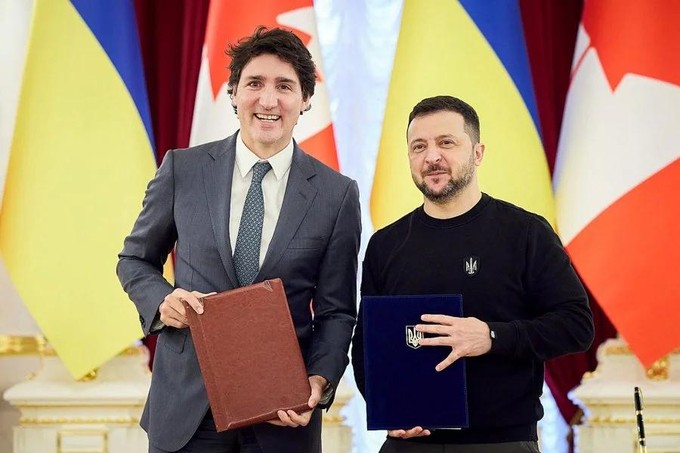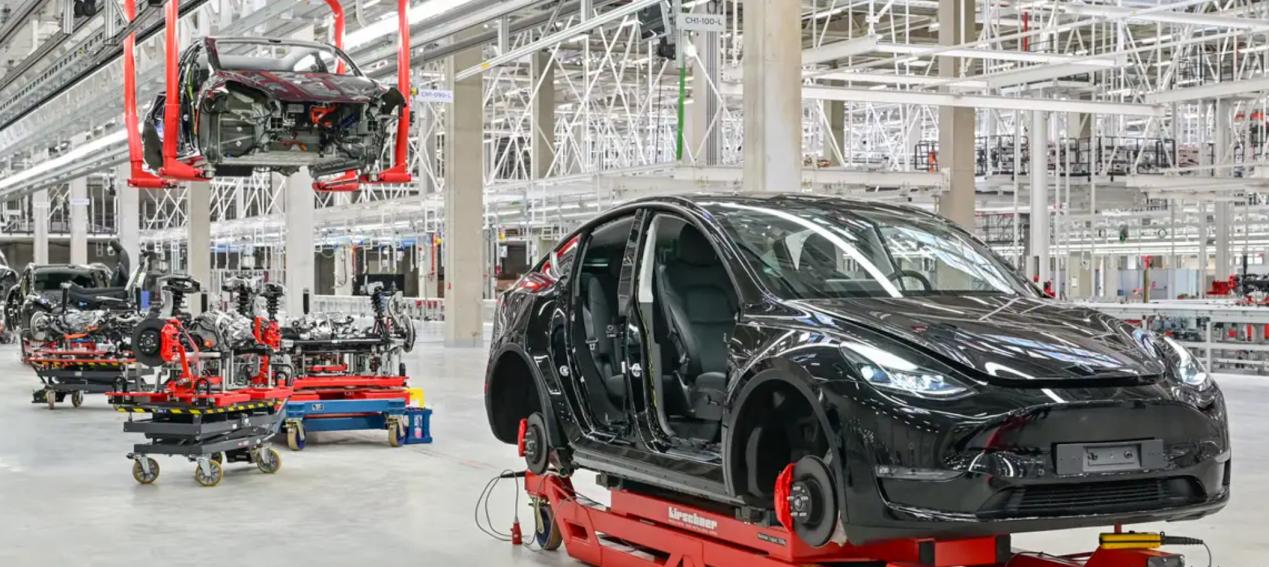
On February 24, 2025, Canadian Prime Minister Justin Trudeau made a surprise visit to Kiev, the capital of Ukraine, announcing that he would use seized Russian assets to provide $5 billion in aid to Ukraine, and promised to provide military support including 25 light armored vehicles, two armored combat support vehicles and F16 fighter flight simulators. This is Trudeau's fourth visit to Ukraine since the outbreak of the Russia-Ukraine conflict in 2022, and it is also the "highlight moment" of his political career - it comes just two weeks before the election of a new leader of the Liberal Party of Canada, and Trudeau will be replaced as prime minister. This move not only reflects the continuous increase of the Western camp under the situation of the Russian-Ukrainian war, but also reveals the complex game of Canada's domestic political transition period.
The C $5bn aid, Canada's largest single tranche of support to Ukraine to date, was funded by "seized Russian assets". Since February 2022, Canada has provided more than $13.3 billion in military, financial and humanitarian assistance to Ukraine. However, there are legal disputes over the use of frozen Russian assets. International law generally considers that the freezing of assets is a temporary measure, and direct misappropriation requires authorization by the United Nations or war reparations procedures. Canada's move could trigger a strong Russian response and challenge existing international rules.
The F16 fighter simulator included in the aid underscores Western support for the modernisation of Ukraine's air force. Previously, Canada has provided Leopard 2 main battle tanks, drones and hundreds of thousands of rounds of ammunition. Trudeau's emphasis on "helping to guarantee Ukraine's energy security" may point to responding to Russia's continued attacks on energy infrastructure. Such assistance marks a shift in Western support for Ukraine from "emergency defense" to "systematic reconstruction" in an attempt to pave the way for a long-term war of attrition.
Trudeau's choice of a high-profile visit to Ukraine before leaving office is closely related to his domestic political situation. Since announcing his resignation in January 2025, the Liberal Party has continued to decline in polls, the Conservative Party is eyeing, and the election of a new party leader is regarded as "a key battle to save the ruling status." By strengthening the stance on aid to Ukraine, Trudeau can both consolidate the Liberal Party's "internationalist" image and set the policy tone for his successor, forcing potential candidates to continue their hard line against Ukraine.
However, the current power of Western internal aid to Ukraine is divided, the EU recently passed 50 billion euros aid plan, but the US Congress delayed 60 billion dollars because of the dispute between the two parties. As a "middle power", Canada has tried to fill the ally gap with high-profile actions, but the C $5 billion aid still needs parliamentary approval, and the Liberal "minority government" status makes it vulnerable to opposition. Trudeau's move may be aimed at deflecting public pressure from the country's inflation and housing crisis, but its effect may be tempered by public fatigue with long-term aid to Ukraine.
On March 9, the Liberal Party will elect a new leader, who will automatically take over as prime minister. Top candidates include former central bank governor Mark Carney and Foreign Secretary Melanie Jolly. Carney advocates "pragmatic multilateralism" and may adjust the pace of aid to Ukraine to focus on the domestic economy; Jolly is likely to follow Trudeau's path and strengthen "values diplomacy." Whoever wins will need to balance promises to help Ukraine with voters' concerns about livelihood issues. The Conservatives have threatened to move a no-confidence motion when Parliament reconvenes in an attempt to topple the Liberal minority government. If the government succeeds, Canada may hold an early election, and the Conservative leader Polieff may win support with a platform of "cutting foreign aid and prioritizing people's livelihood." Trudeau's commitment to Ukraine this time is not only for the Liberal Party to fight for diplomatic cards, but also for the successor to set a "policy red line", increasing the cost of the Conservative Party to change course.
Trudeau's trip to Kiev is both a curtain call for his personal political career and a high-stakes bet for Canada in the midst of the Russia-Ukraine war and domestic upheaval. The C $5 billion aid may boost the morale of the Ukrainian army in the short term, but in the long term, the outcome of the war still depends on the great power game and resource endurance. For Canada, balancing diplomatic idealism with domestic realities will be a test the new leader cannot avoid. The final resolution of the conflict between Russia and Ukraine may require not only weapons and money, but also a political wisdom that transcends camp confrontation.

The global electric vehicle market in 2025 is experiencing intense turbulence. Tesla, once a disruptor that reshaped the industry landscape, is now mired in an unprecedented sales crisis.
The global electric vehicle market in 2025 is experiencing …
Recently, Chinese telecom companies Huawei and ZTE signed a…
Recently, according to Xinhua News Agency, Israel's air str…
A strongly worded report from the Equality Trust argues tha…
On November 27, 2025, Alibaba officially entered the global…
The focus of the global financial market in 2025 has always…